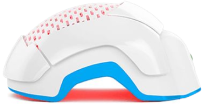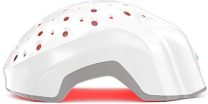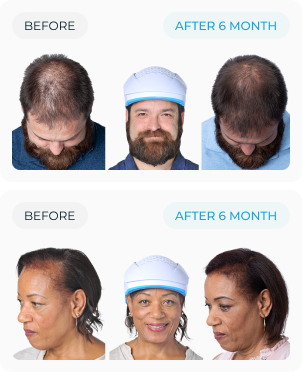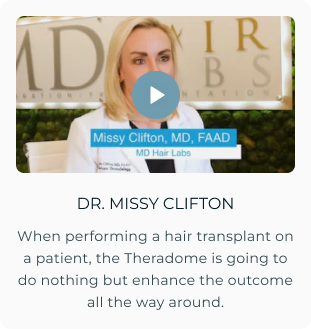If you’re a man experiencing hair thinning or a receding hairline, then you’re far from alone. Hair loss is a common concern, and if you’ve been dealing with it for a while, chances are you’ve come across finasteride (Propecia®).
Traditionally available in pill form, finasteride is an FDA-approved treatment for male pattern baldness. However, a growing number of brands are now offering topical versions of the medication. But does topical finasteride really work?
In this guide, we’ll explore the effectiveness of topical finasteride and help you get the best results.
What is Topical Finasteride?
Topical finasteride is a liquid solution designed to be applied directly to the scalp as a treatment for male pattern baldness. It is not recommended for use by women due to the risk of birth defects during pregnancy.
While oral finasteride has long been a popular option for hair loss, some men prefer to avoid taking it long-term due to possible side effects. As an alternative, the topical version delivers the medication directly to the hair follicles, potentially reducing systemic exposure yet still promoting hair growth.
How Does Finasteride Work?
Finasteride combats hair loss by inhibiting dihydrotestosterone (DHT), a hormone which causes hair follicles to shrink, leading to thinning hair and eventual baldness.
When applied topically, finasteride needs several hours—typically 6 to 8—to fully absorb into the scalp and take effect. Importantly, patience is key. Most users start noticing results within 3 to 6 months, while the most noticeable improvements generally appear after 6 to 12 months of consistent daily use.
What are the Side Effects of Topical Finasteride?
As with any medication, topical finasteride may cause side effects, though not everyone will experience them. The most commonly reported side effects in men include:
- Scalp irritation (itching, burning, or redness)
- Slight discomfort at the application site
- Hormonal effects, such as:
- Decreased libido
- Erectile dysfunction
- Ejaculation issues
- Breast tenderness
Scalp-related side effects typically occur only in the treated areas and are usually mild, often resolving within a few days. Sexual side effects, which stem from DHT suppression, are less frequent and generally less severe with topical use compared to oral finasteride.
Who Shouldn’t Use Finasteride?
Topical finasteride isn’t suitable for everyone. You should avoid using it if you:
- Have a known allergy to finasteride or its ingredients
- Have liver or bladder conditions
- Are pregnant or trying to conceive
Despite some considering topical finasteride a potential alternative for women, it’s important to note that the medication can impact fertility and might cause birth defects if absorbed during pregnancy. Because of this, women should explore other hair regrowth options.
Additionally, if your partner is pregnant, you should use protection during intercourse, as traces of finasteride can be present in semen.
If you’re taking other medications or have underlying health concerns, consulting a doctor before starting finasteride is always recommended to ensure it’s safe for you.
The Effectiveness of Topical Finasteride
Oral finasteride has been clinically proven to help men with male pattern baldness, with many experiencing noticeable hair regrowth—especially when treatment begins in the early stages of hair loss. Although, the effectiveness of topical finasteride is still being studied.
Early findings suggest it may offer similar hair-regrowth benefits, but the research is not as extensive as it is for the oral version. Moreover, if hair loss has been ongoing for many years, there might be fewer active hair follicles left to stimulate, making regrowth less likely.
That said, existing evidence indicates that topical finasteride provides comparable results to the oral form while possibly lowering the risk of systemic side effects, making it an appealing option for some users.
How to Increase The Effectiveness of Topical Finasteride
If topical finasteride alone isn’t delivering the results you’re hoping for, combining it with additional treatments can enhance hair regrowth. One promising option is low-level laser therapy (LLLT), which uses laser light to stimulate hair follicles, improve blood circulation, and support thicker, healthier hair growth.
A standout in this field is the Theradome laser helmet, a dermatologist-recommended, FDA-cleared red light therapy device with a 98% satisfaction rate. Built for long-term use, it requires only a one-time investment of under $1,000, with financing options available.
Studies have shown that LLLT works synergistically with finasteride, leading to better results than using the medication alone. Unlike finasteride, LLLT has no known side effects, making it a safe option for both men and women.
The Theradome PRO LH80 provides full-scalp coverage, delivering consistent therapeutic energy across 582 cm². With just two 20-minute sessions per week, it delivers an optimal energy dose of 7 J/cm², effectively stimulating hair follicles and promoting regrowth.
Whether you’re looking to increase the effects of finasteride or seeking an alternative solution, Theradome offers a convenient and long-lasting way to take control of your hair health.






















